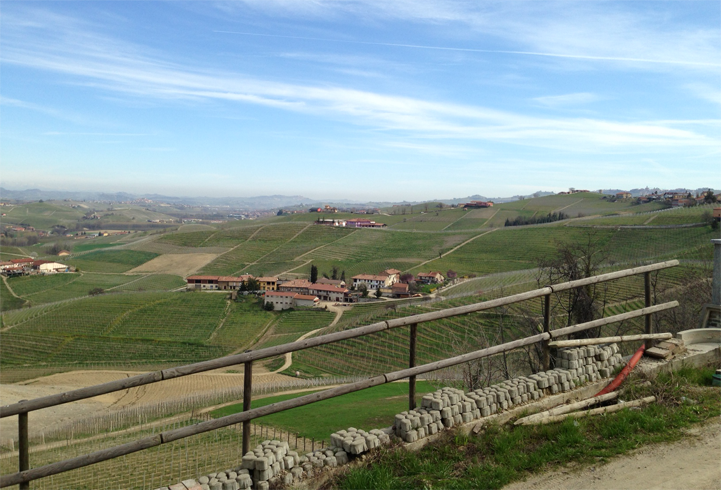
Giacomo Fenocchio – Barolo at its best
“If anyone is interested, this is what a Barolo of 150 years ago would have tasted like.”
- Gambero Rosso
On a crisp morning in the hills of Monforte d’Alba with the fabled nebbia slowly surrendering to the spring sun, Claudio Fenocchio traces the borders of his prized vineyards in the air with his index finger, Cannubi in Barolo, Villero in Castiglione Falletto, and below where we stand outside his cantina at the crest of the hill, Bussia. Claudio is clearly far more comfortable amongst his family’s vines than he was a week ago amid the chaotic hum of Vinitaly – but then again so are we.
Vinitaly – the world’s largest wine fair – is an essential trade tool, a way to connect and taste, but it’s always less than half the real story, context is everything after all. And people like Claudio, a warm and gentle-spirited man (though with the physical presence of a nightclub doorman), could easily be lost in the sea of conspicuous glamour, a small fishing boat swamped in the wake of a multitude of gleaming ocean liners. But, as they say, not all that glitters… especially not in the world of wine.
And people like Claudio, a warm and gentle-spirited man (though with the physical presence of a nightclub doorman), could easily be lost in the sea of conspicuous glamour...
Presentations at Vinitaly range from substantially sized, though distinctly ephemeral, polystyrene castles to a couple of folding chairs and a small table bearing wine. Yes, it was with the latter setup that we met Claudio – no turrets, no portcullis, not even a drawbridge. We were led here part through research and part at the urging of an Italian based colleague who holds the wines in high regard. And though the wines on the table were the 09’s and only nominally released (and really needing more time to settle) a brace of 2008 Barolo easily filled all the corners of our ambitious brief. These were wines of power, grace and effortlessly authentic character. Traditional wines, but with no hint of rusticity, they spoke of a mature confidence in method and were free of ego or international influence. This was exactly what we wanted to find and we quickly made an appointment to see Claudio in situ.
Later that week, while being benignly stalked by the family cat – a creature with a permanent loop in its tail, the result of an encounter with a cow, or so we are told – Claudio guided us around his small estate. For over five generations, (the estate was founded in 1864), the Fenocchio family have farmed the Langhe hills and made wine according to traditional practices. And not much has changed today, a few more vineyards, a new winery and a continued commitment to making classic and authentic expressions with an unwavering eye to purity.
The cantina is a fairly new building, the old one being someway down the road on the way to Castiglione Falletto, and source of some confusion, well for us at least (and one of the few times where second guessing the TomTom didn’t pay off). But the relative modernity of the winery is only skin-deep, naturally there are stainless steel tanks for fermentation (as well as wooden fermenters) and the production of Arneis and the pulpy, bright reds of their introductory range, but beyond this the traditions of Piedmont are writ large in the cellar. Large Slavonian oak casks dominate the immaculate cantina that, while having a certain reverent calm, also has one of the best views in the district, as Claudio demonstrated when he swung open the doors to the barrel room. Claudio employs only ambient yeast for fermentation and though current macerations are long, he has been experimenting with ones that last as long as 90 days – an exploration of past methods that is yielding very interesting results.
In the tasting room a walk back through the three crus from the stunning 2008 vintage confirmed not only the skills of Claudio but the expressive detail and difference between the three great sites: Villero, Cannubi and Bussia. This was rounded out by two Bussia Riserva from the standout years of 2004 and 2006 and a 1978 Bussia made by Claudio’s father – though sadly the bottles of 1901, 1923 and 1947 remained unopened (forgivable though as these were the last known examples). Put simply, these wines are true treasures of Piedmont, and utterly unmissable for those that love classically styled Barolo. Keep an eye out as these will be coming soon to Rossi & Riccardo, but will be extremely limited.
